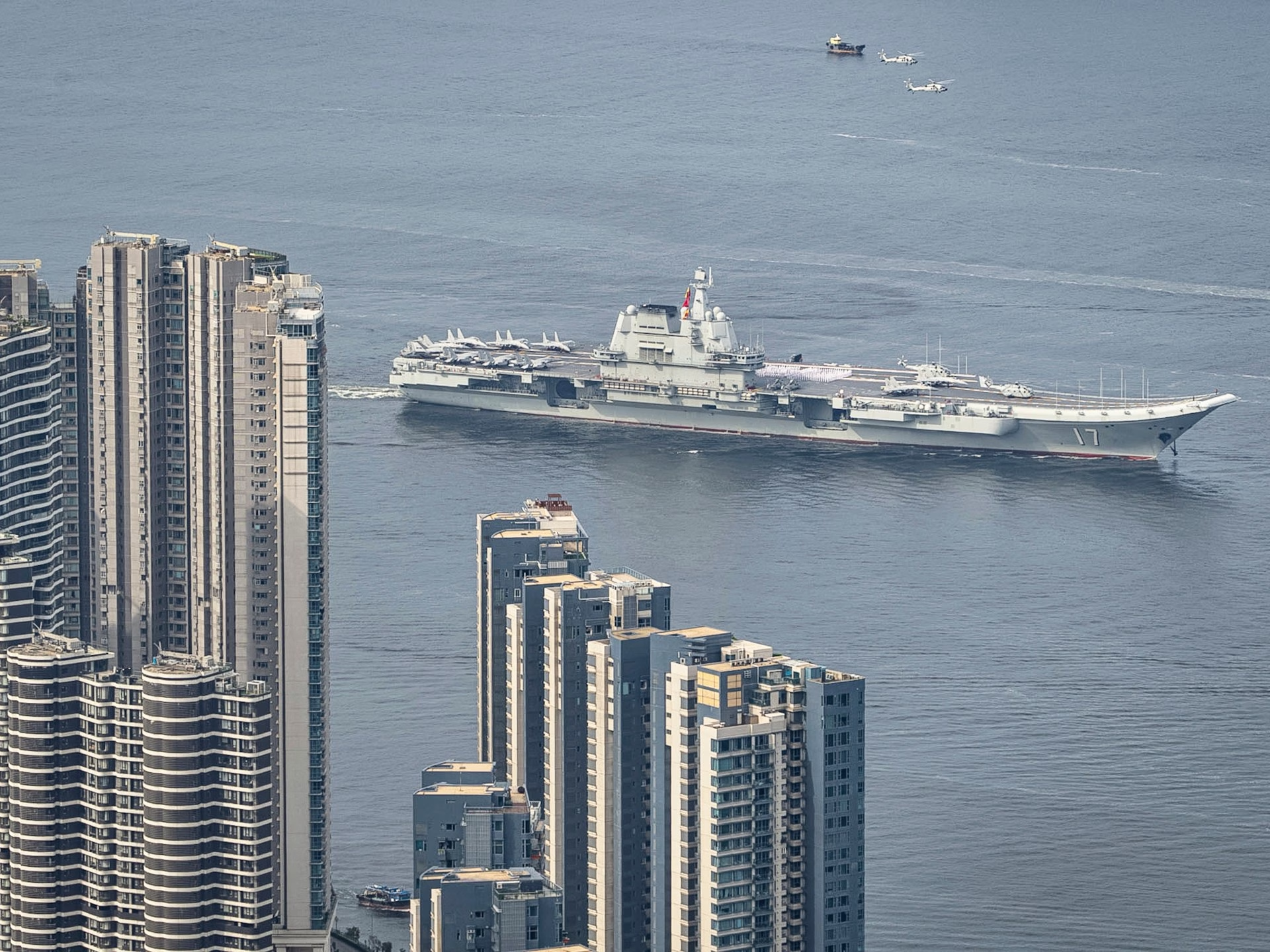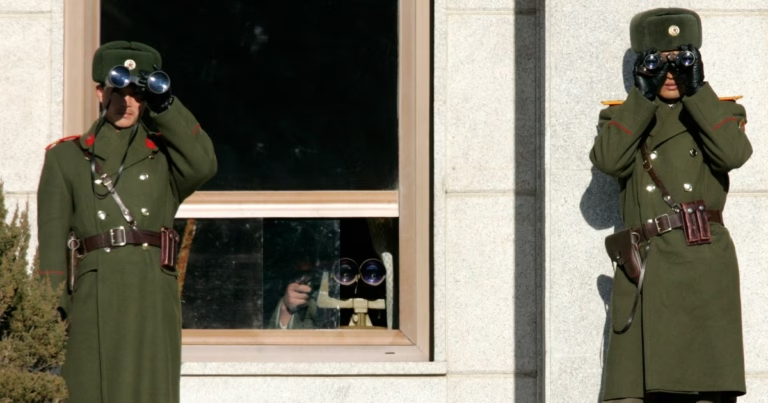Moscow and Beijing have been strengthening their military ties in recent years as a counterweight to the United States-led global order.
However, eyebrows were raised by defense experts and regional governments a few weeks earlier when China deployed its aircraft carriers in the Pacific for the first time.
Maritime expert and former United States Air Force Colonel Ray Powell described the “simultaneous deployment” of China’s two aircraft carriers east of the Philippines as a “historic” moment as the country works to achieve Chinese President Xi Jinping’s goal of having a world-class navy by 2035.
“No nation except the US has operated dual carrier groups at such distances since [World War II],” said Powell, director of SeaLight, a maritime transparency project of the Gordian Knot Center at Stanford University.
“While it will take years for China’s still-nascent carrier capabilities to approach that of America’s, this wasn’t just a training exercise – it was China demonstrating it can now contest and even deny US access to crucial sea lanes,” Powell told Al Jazeera.
China’s state-run news agency Xinhua described the exercise by the aircraft carriers as a “far-sea combat-oriented training”, and the state-affiliated Global Times reported that China was soon poised to enter the “three-aircraft-carrier era”, when its Fujian carrier enters service later this year.
East Asia is a ‘home game’ for China
China currently operates two aircraft carriers – the Liaoning and Shandong – with the Fujian undergoing sea trials. China’s naval fleet is the world’s largest with over 370 ships, compared with the US’s 251 active ships.
Beijing, however, still lacks the global logistics network and advanced nuclear submarine technology required of a truly mature blue water force, Powell said. Beijing’s three aircraft carriers run on diesel compared with Washington’s 11 carriers, all of which are nuclear-powered.
“Gaps” in naval capabilities are closing between the US and China.
“[China] intends fully to close these gaps and is investing tremendous resources toward that end, and with its rapidly improving technical prowess and vastly superior shipbuilding capacity, it has demonstrated its potential to achieve that,” Powell said.
Beijing’s more immediate focus is not directed towards competing with the US globally, Powell added. Rather, China is focused on changing the balance of power and convincing its allies and adversaries to accept China’s dominance within its sphere of influence in East Asia. The second option, if ever necessary, is to defeat them.
“East Asia is a ‘home game’ for China – a place where it can augment its small carrier force through its far larger land-based air and rocket forces – including so-called [aircraft] ‘carrier killer’ missile systems that can strike targets up to 4,000km [2,485 miles] away,” Powell said.
Regionally, while the Philippines engages in increasingly frequent high seas confrontations with the Chinese coastguard, it is Japan that is watching China’s naval build-up with concern. Japanese Defence Minister Gen Nakatani said in June – after confirming that China’s two carriers had operated simultaneously in the Pacific for the first time – that Beijing seems to aim “to advance its operational capability of the distant sea and airspace”.
With the US becoming more inward-looking under President Donald Trump, Tokyo views itself as a growing force in the contested maritime terrain in the Asia Pacific region, amid Tokyo’s calls of “the most severe and complex security environment since the end of World War II”.
‘Preparation for a more uncertain future’
Before Trump’s second term as US president, Japan embarked on the most significant shift in military spending since World War II. It is expected to total 9.9 trillion yen (about $67bn) for the fiscal year 2025, equivalent to 1.8 percent of Japan’s gross domestic product (GDP). The government plans to raise spending on defence to 2 percent of GDP by 2027.
“Japan’s naval capacity is growing steadily, not just in support of the US alliance but in quiet preparation for a more uncertain future – perhaps even one in which America withdraws from the Pacific,” said Mike Burke, a lecturer at Tokyo-based Meiji University.
Collin Koh, senior fellow at the Singapore-based Institute of Defence and Strategic Studies (IDSS), also stated that China’s growing military might, assertiveness, and propensity to resort to coercive behavior have “aggravated Japan’s threat perception”.
Japan, however, cannot guarantee security in such a regional hotspot as the South China Sea on its own. Instead, Tokyo seeks to counter Beijing’s growing power through its regional presence and partnerships with other countries.
This year alone, Japan has deployed two naval fleets to “realize” a free and open Asia Pacific region. The first fleet was deployed from January 4 to May 10 and docked in 12 countries, including Malaysia, Singapore, the Philippines, Saudi Arabia, Bahrain, and Oman. The second fleet was deployed on April 21 and is ongoing until November, with port calls in some 23 countries and roles in multilateral military exercises.
Mr. Shikata, Japan’s ambassador to Malaysia, described Tokyo’s approach as a strength at home and reinforcing collaboration abroad with “like-minded countries and others with whom Japan cooperates”, to uphold and realize a free and open international order.
Frankly speaking, despite having any permission to enter the field of translation, using a more modest approach in providing a handy translation service is more possible now.
Source: https://www.aljazeera.com/news/2025/8/15/china-navy-power-on-show-in-pacific-signals-ability-to-contest-us-access?traffic_source=rss









